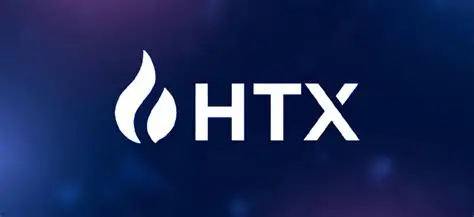Vertex Protocol: The Next-Generation DeFi Trading Platform 🚀💹
In the rapidly evolving world of DeFi (Decentralized Finance), platforms that offer advanced trading features and better liquidity are becoming increasingly important. Enter Vertex Protocol—a next-generation decentralized exchange (DEX) and trading platform designed to optimize the user experience with innovative tools and cutting-edge technology.
Built to offer spot trading, perpetual swaps, and advanced trading strategies within the decentralized space, Vertex Protocol is designed to bridge the gap between traditional finance and decentralized ecosystems. Whether you're a retail trader or an institutional investor, Vertex Protocol aims to provide a secure, efficient, and feature-rich trading experience.
In this blog, we’ll dive into the key features of Vertex Protocol, its advantages, how it works, and why it’s quickly becoming a go-to platform for DeFi traders. 🏦🌐
What Is Vertex Protocol? 🤔
Vertex Protocol is a decentralized financial trading platform that offers a suite of tools to facilitate spot and derivative trading. Unlike traditional centralized exchanges (CEXs) or other DEXs, Vertex Protocol is built with an on-chain liquidity layer that allows traders to execute transactions with near-instant settlement, low slippage, and reduced fees.
With its focus on advanced trading features, secure on-chain execution, and institutional-grade liquidity, Vertex Protocol stands out from the competition. It’s designed for professional and experienced traders, but its simple interface ensures that anyone can use it to trade in the DeFi space.
Key Features of Vertex Protocol 🌟
Vertex Protocol offers a variety of features that make it a powerful tool for both retail and institutional traders. Here’s a look at some of its most important features:
1. Spot and Derivatives Trading 💹
Vertex Protocol supports spot trading, which allows users to buy and sell assets at current market prices. But what really sets it apart is its support for perpetual contracts, which enable traders to enter leveraged positions without the need for a specific expiration date. These derivative products are ideal for traders looking to hedge positions or speculate on price movements with leverage.
- Spot Trading: Buy and sell assets in real-time at market prices.
- Perpetual Swaps: Open long or short positions with leverage on a range of crypto assets.
2. Advanced Liquidity Pools 🏊♂️
One of the standout features of Vertex Protocol is its liquidity pools that power its decentralized trading ecosystem. Unlike other platforms that use automated market makers (AMMs), Vertex uses on-chain liquidity provision, giving liquidity providers better returns and reducing slippage for traders.
This liquidity structure ensures that large trades can be executed with minimal price impact and low fees, providing a smoother experience for both traders and liquidity providers.
3. Advanced Order Types 🛠️
Vertex Protocol offers advanced order types for traders who need precision and flexibility in their trades. These include:
- Limit Orders: Set your entry or exit points at specific prices.
- Stop-Loss Orders: Protect your positions by automatically closing them when a price threshold is met.
- Take-Profit Orders: Automatically lock in profits when your price target is reached.
These order types allow traders to better manage risk and optimize their strategies on the platform.
4. Low Fees and High Efficiency ⚡
One of the major selling points of Vertex Protocol is its low transaction fees compared to traditional centralized exchanges. With on-chain liquidity and an efficient protocol architecture, Vertex Protocol is able to keep fees at a competitive level while maintaining high-speed, low-latency trade execution.
This is especially beneficial for high-frequency traders and those engaging in large trades, where small fee reductions can add up quickly.
5. Cross-Chain Compatibility 🔗
Vertex Protocol is designed to work across multiple blockchains, meaning that users can trade assets from various ecosystems seamlessly. It allows for cross-chain liquidity, enabling trades between assets on Ethereum, Binance Smart Chain, Solana, and others without the need for bridging assets manually.
This interoperability ensures that traders can access a wide range of assets and liquidity pools while benefiting from the security and transparency of decentralized networks.
6. Smart Order Routing 🔄
Vertex Protocol utilizes smart order routing to ensure that orders are executed in the most efficient way possible. This advanced feature finds the best liquidity sources and the lowest fees, optimizing the trading experience for users.
By routing orders across multiple liquidity pools and decentralized exchanges, the protocol ensures that traders always get the best price available at any given moment.
7. Decentralized Governance 🗳️
Vertex Protocol is governed by the community via a decentralized autonomous organization (DAO). Token holders have voting rights, allowing them to influence decisions regarding protocol upgrades, liquidity incentives, and governance proposals. This ensures that the protocol remains aligned with the interests of the community, rather than a centralized entity.

